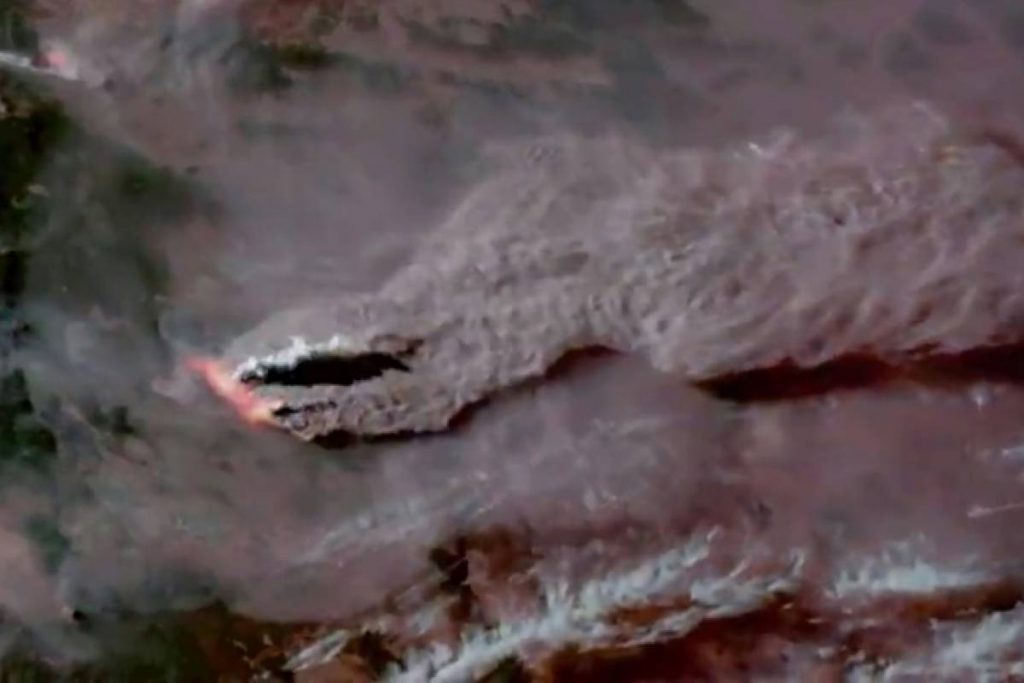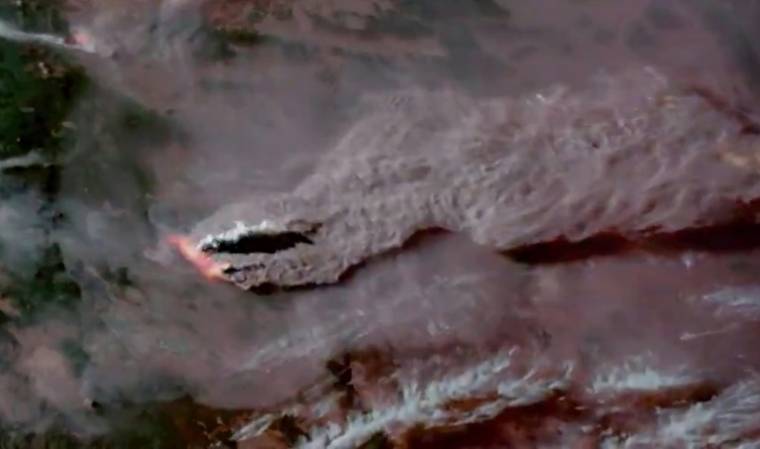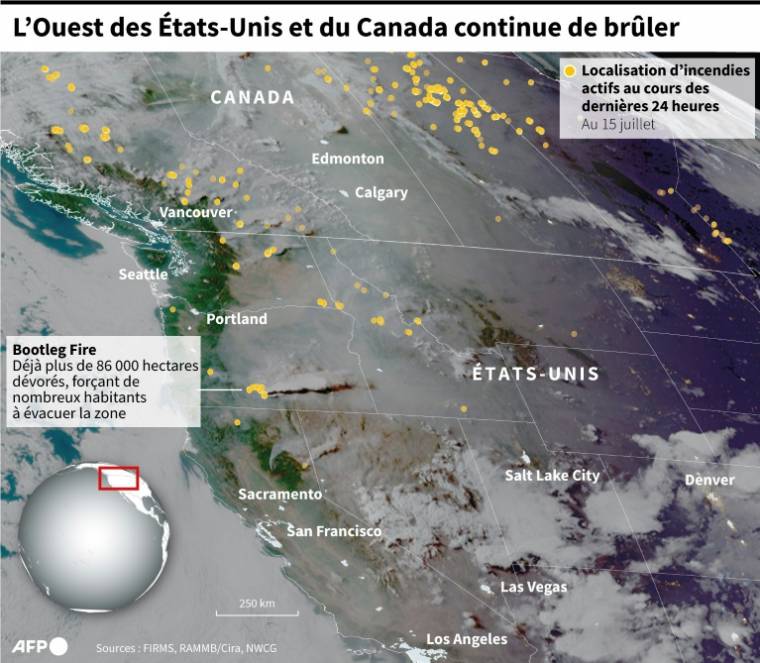
The American West is burning, and there is no respite in sight

Satellite image of smoke from Bootleg Fire, Oregon, July 13, 2021 (NOAA/GOES/-)
Fire season is just beginning, but fires were already ravaging hundreds of thousands of hectares in the American West on Thursday, fueled by an alarming drought.
Montana, Oregon, Arizona, Idaho, Utah, New Mexico…None of these states delivered.
In California, firefighters were concerned about the progress of the Dixie Fire, whose trajectory is similar to the 2018 Camp Fire, notorious for having nearly wiped Paradise City off the map and killing 86 people—presumably the deadliest fire in the United States. in a century.
The authorities called on residents of several nearby towns to evacuate the area.
While 2020 was the worst fire year in modern California history, 2021 is increasingly likely to break that record: Fires have now consumed twice the amount of vegetation at about the same time last year, according to fire department officials.

Satellite image of the western United States and Canada showing the locations of active fires from 24 hours to July 15 (AFP/)
But in neighboring Oregon—where Portland is located—the fires are causing the most damage right now: Throughout the night, firefighters battled the flames in the Bootleg Fire, which has already devoured the equivalent of nearly 130,000 football fields, and continues to grow. San Francisco firefighters were sent to help.
The National Fire Management Agency said it had already activated its highest alert level in the country “due to the high fire activity in the United States and the resources allocated to these fires.”
This is the first time in 10 years that this level has been reached so early.
Fires are already part of the natural cycle of the forests of the American West, but each year the fire season begins earlier and ends later. Scientists attribute this phenomenon to climate change.
Water restrictions, deforestation… Actions are underway to prevent the situation from turning completely into a catastrophe. But will it be enough?
The region is in fact stuck in a vicious circle: arid soils and dry vegetation, in turn, create the right conditions for increased temperatures.
High mercury, frequent heat waves and low precipitation in places serve as a powder keg.
cjc / rle

“Unapologetic pop culture trailblazer. Freelance troublemaker. Food guru. Alcohol fanatic. Gamer. Explorer. Thinker.”
